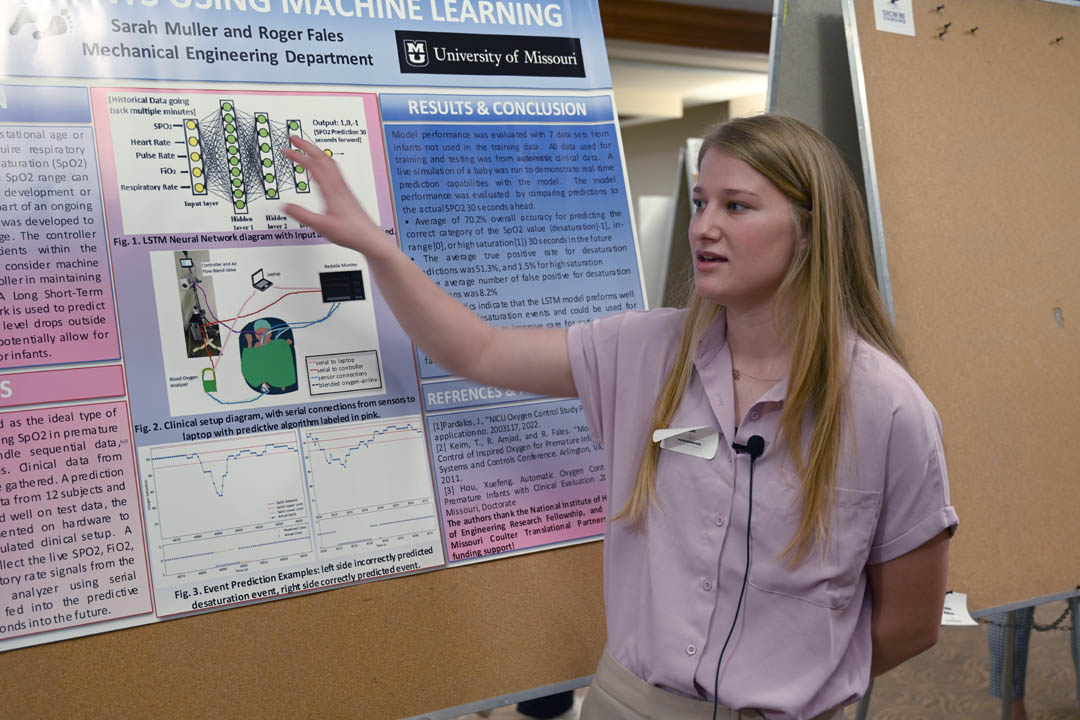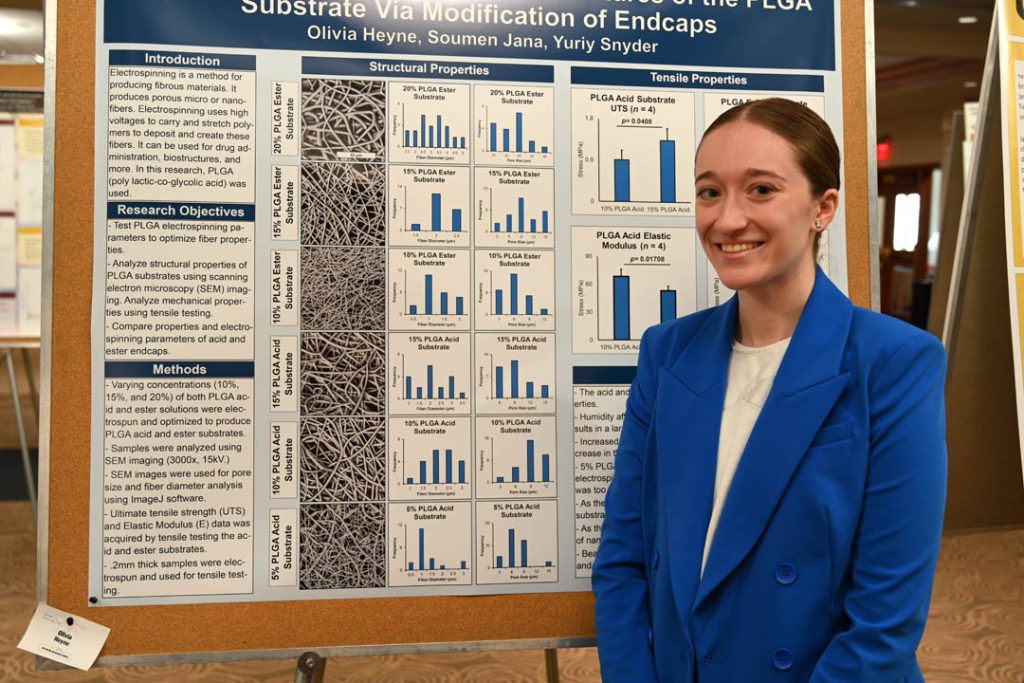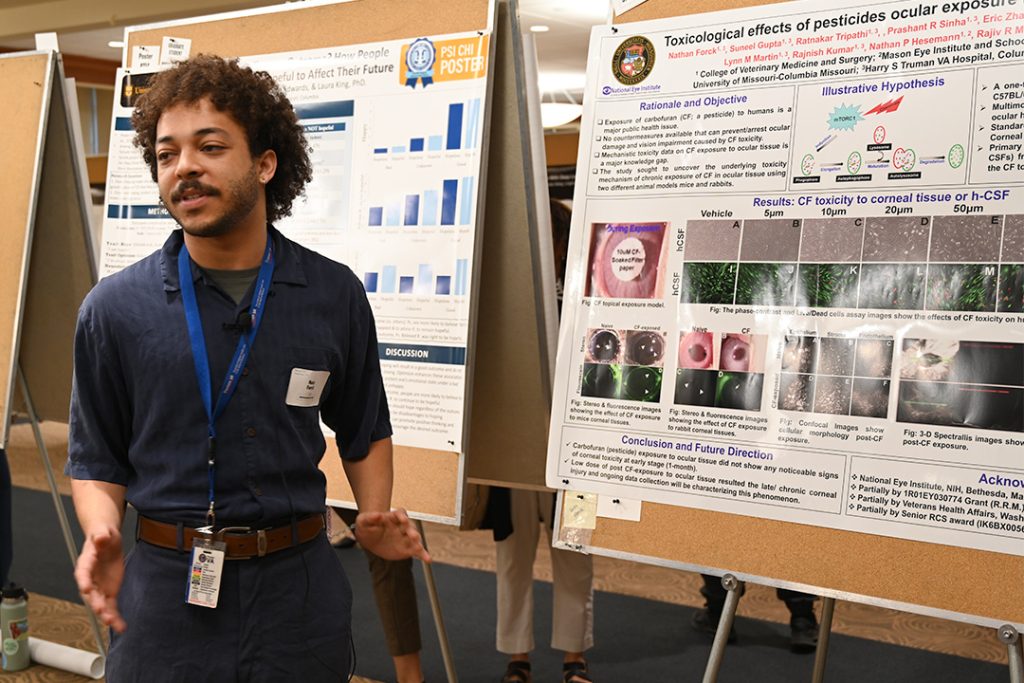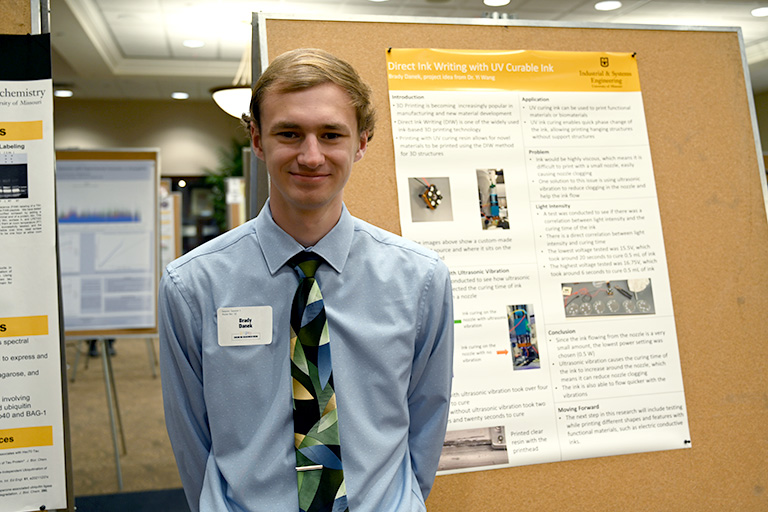April 11, 2024
Judging from the innovative projects and research they presented this week, it’s evident that engineering students at Mizzou are getting ready to change the world.
Show Me Research Week, held in April, gives students an opportunity to present the work that they conduct throughout the year in front of judges and other interested students and members of the Mizzou community. This year, more than 60 engineering students chose to present work as part of the Research and Creative Achievements Symposium.
One presenter, mechanical engineering student Sarah Muller, has been working on research with Associate Professor Roger Fales for the last four years to create a device (currently in clinical trials) that monitors and automatically adjusts oxygen levels for pre-mature babies. Over the years she’s become a regular presenter at Mizzou’s undergraduate research forums.
“I’m an engineer. I never thought I would want to do something in a hospital, but I’ve always wanted to do something that helps people and impacts the world in a positive way,” Muller said. “I’ve worked on this project for four years and presented work at research forums for the last four semesters. It’s a cool way to network with people and showcase my work.”

Since last year’s inaugural event, the symposium grew by more than 120 students across academic units and expanded to span over three days of poster and oral presentations in Memorial Union.
For engineering undergraduates, the opportunity to present research is a great way to prepare for life as a graduate student. Olivia Heyne, originally from North English, Iowa, is now a biomedical engineering sophomore at Mizzou planning to continue her education.
“I wasn’t initially thinking about graduate school, but I am now,” she said. “I love the lab environment. I love being able to do all this hands-on research. I also work at the hospital and have been able to meet with patients and being able to see the impacts of research like mine—even though I’m not a frontline health care worker—has been really rewarding.”

And even if one isn’t planning on continuing their education, biomedical engineering senior Nate Forck recommends other students get involved.
“You should get into a lab,” he said. “If you’re in STEM, you should be looking for that lab experience. I definitely recommend it. You will meet a lot of people and learn a lot of stuff, just about every day.”

For sophomore Brady Danek, the in-lab work he’s done has prepared him for becoming a scientist in addition to his engineering coursework.
“I enjoyed the hand on experience, actually being in the lab, feeling like a real scientist,” he said. “I’m not just sitting at a desk taking in information, or reading off a whiteboard. I’m finding things out for myself.”

Exercise your creativity and fuel your passion for discovery by engaging in research as an undergraduate. Choose Mizzou Engineering!